RetiRement: Back to School in retirement

Dementia
Coping with Common, Sometimes Distressing Behaviors
the Advantages of monotasking







































































2 SENIOR LIVING IN ALASKA • MARCH 2024 In Home Care Companion Care C o es lzhei e De e ia Ca e os ospi ali a io Ca e a spo a io (907) 677-7890 www.midnightsuncare.com

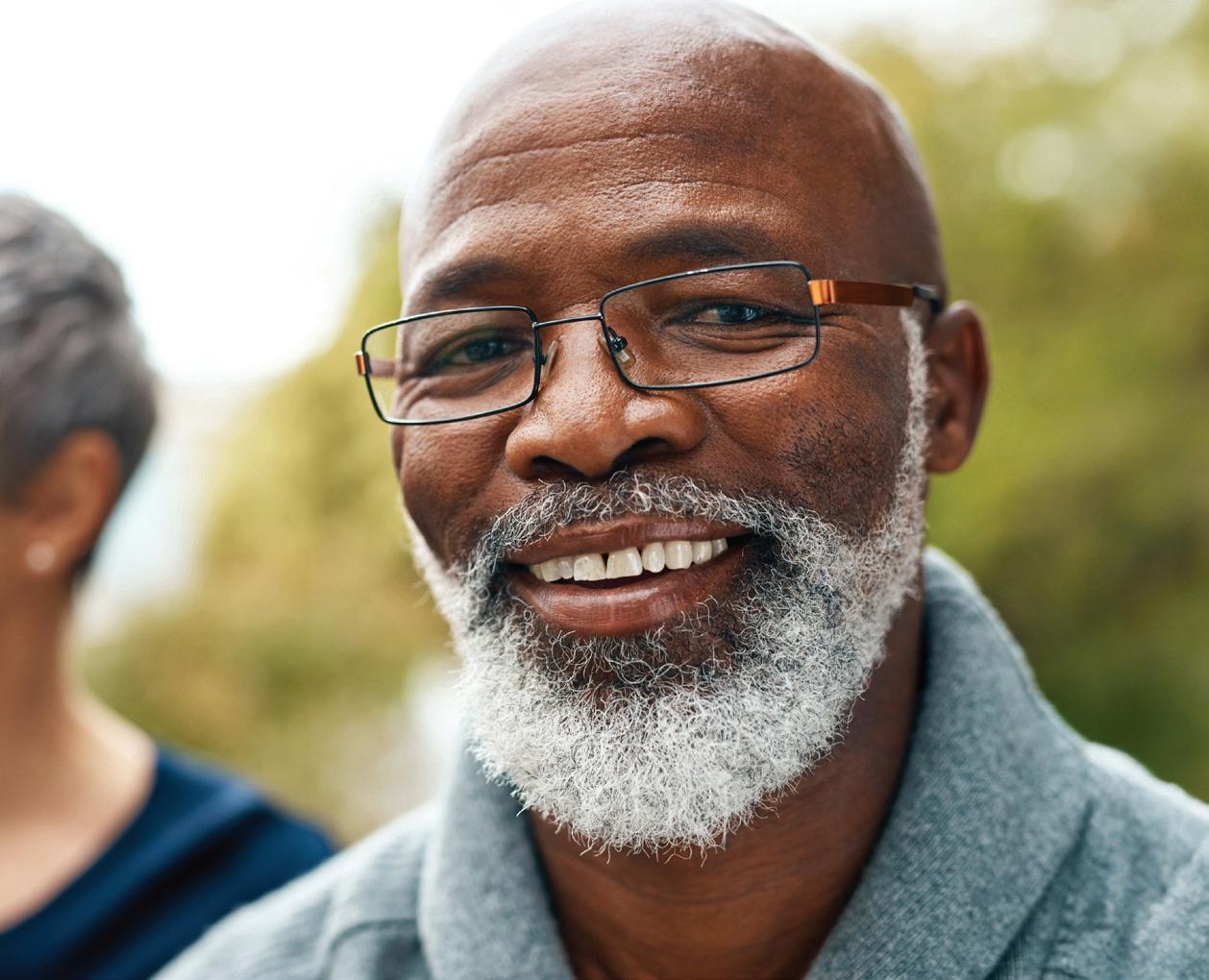

CONTENTS
Care ers and r etirement
4 Back to school in retirement
6 The dos and don’ts of paying off a mortgage before retirement
Healt H C are
8 Making sense of prostate cancer screening in older men
10 Mayo Clinic Q&A: Optical and auditory questions answered
13 Dementia: Coping with common, sometimes distressing behaviors
li F est Y le
1 7 The advantages of monotasking
1 9 Boost your energy naturally
21 How to cook all types of greens so they taste delicious
Publisher: Andy p ennington
e ditor : n ina Wladkowski
s pecial Projects d irector: Brandi n elson
s ales: Joleesa s tepetin, Justin Thompson, Josh Trouy, r yan e strada, Victoria Hansen
a dvertising Operations: l isa Mc g uire
Graphic d esigner: Jian Bautista
Graphics m anager: Michael Oldroyd
This special publication was produced by the advertising department of Anchorage Daily n ews. The AD n newsroom was not involved in its production.
MARCH 2024 • SENIOR LIVING IN ALASKA 3
MAking sense Of prOsTATe CAnCer sCreening in OlDer Men
8
19
BOOsT yOur energy nATurAlly
THe DOs AnD DOn’Ts Of pAying Off A MOrTgAge BefOre reTireMenT
6
Back to School In RetIRement
For generations, retirement was a time to stop work and spend time with the grandchildren. But advances in technology and health care mean that individuals have opportunities to create a new purpose in this next act. and continuing education can help.

“Older adults have a strong desire to continue learning and expanding their knowledge,” says rick Benbow, a vice president with Western governors, an online school. “Higher education provides them with opportunities to pursue new interests, acquire new skills and stay mentally engaged.”
Of course, returning to the classroom isn’t something that you should just jump into. it’s important to consider the return on investment, affordability, flexibility and interest of the program before committing to it, says Michael ryan, a financial planner and financial coach.
The first step is to think about what you want and if a full degree is needed. in some cases, a certificate will suffice. You also need to consider the time requirements. Can you juggle school and your family with professional and community requirements?
if you don’t want to spend a lot of time in the classroom, “you may prefer a program that is parttime, online or allows you to take classes at your own pace,” ryan says.
you could also simply attend class without getting a grade. The university of Wisconsin system, which includes 13 universities across 26 campuses, allows state residents 60 and older to audit classes for free. Many other states have similar programs.
The Osher lifelong learning institutes, meanwhile, offer non-credit online and in-person classes and activities tailored to those 50 and older. The program has endowed 125 Osher institutes
4 SENIOR LIVING IN ALASKA • MARCH 2024
Dawn Wotapka, Kiplinger’s Personal Finance, Kiplinger’s Money Power
affiliated with academic institutions of all sizes, prestige levels and locations, according to steve Thaxton, executive director of the national resource Center for Osher lifelong learning institutes. students must be members — there are about 150,000 nationwide paying prices varying from $30 a year to $950, depending on the location, Thaxton says.
Meanwhile, Arizona State University in suburban phoenix offers a twist on the idea of going back to school: the Mirabella, on-campus senior housing. it includes 238 independent living residences and 58 health care residences, ensuring that residents can age in place. residents receive access to lifelong learning and engagement opportunities through Mirabella’s integration with Asu, says lindsey Beagley, Mirabella’s senior director of lifelong university engagement. There is no additional charge or tuition assessed to the residents.
Buying into the Mirabella costs between $398,000 and $1 million or more, with the estate receiving an 80% refund when the resident dies. Monthly fees to cover food, electricity and other expenses range from $2,495 to $7,592.
regardless of what you decide to do, make sure that you can afford it. “Taking out loans for an advanced degree post-retirement can be risky, especially if you are living on a fixed income,” Ryan says. Be sure to apply for scholarships, grants, federal aid and other programs. Also look into unused 529s that may have been taken out for children or grandchildren, says Jimmy lee, chief executive officer of the Wealth Consulting Group in Las Vegas.
Dawn Wotapka is a contributing writer at Kiplinger Retirement Report. For more on this and similar money topics, visit Kiplinger.com.




MARCH 2024 • SENIOR LIVING IN ALASKA 5
A division of Ear Nose Throat Specialists of Alaska Anchorage Audiology Clinic are the experts in hearing loss, hearing aids and hearing tests With over a decade of experience, our certified audiologists are available to serve you Comprehensive hearing evaluations Hearing aid fittings & repair Real-Ear-Measurements Custom ear p ugs & protection Tinnitus management Rehabilitative & preventative counseling Hear ng Evaluat ons Educate T nn tus Managemen Hear ng A ds Real Ea Measurement Early Intervent on Implantab e Solut ons Custom Ear Plugs & Protect on Hearing Care is Health Care Call for your appointment in Anchorage, Wasilla Kodiak or Homer. 907-563-8008 ENTspecialistsAK.com

The dos and don’ts of paying off a mortgage before retirement
Bortz,
Many people strive to pay off their Mortgage before they retire. but that isn’t always the best financial Move.
“Having fewer bills to pay in retirement makes your retirement savings go further and your mortgage payment is typically your biggest monthly expense,” says David edmisten, founder of next phase financial Planning in Prescott, Arizona. “However, there are other aspects pre-retirees need to consider before they use a large amount of their savings to pay off their home loan.”
Here are scenarios in which it does and doesn’t make sense pay off your mortgage before you retire:
Do, if you want to cut expenses. eliminating your mortgage means you’ll be crossing off what is almost certainly your largest debt and cutting your fixed monthly expenses significantly. Consider: The median monthly mortgage payment for u s. adults ages 55 to 64 is $989, according to ValuePenguin, a financial research firm.
Although you may have less in savings or investments after retiring the loan, reducing your baseline expenses will free up your cash flow for other things.
6 SENIOR LIVING IN ALASKA • MARCH 2024
Daniel
Kiplinger’s Personal Finance, Kiplinger’s Money Power
Do, if you have a high interest rate. Although mortgage refinancing has surged within the past few years, with many homeowners taking advantage of record-low mortgage rates, nearly half of baby boomers said they didn’t refinance during the pandemic, a lendingTree survey shows. if your mortgage rate is high, or you have an adjustable-rate mortgage that has already reset to a higher rate, it probably makes sense to pay off your remaining loan balance before you retire, says edmisten.
Do, if you can Make low-risk investMents
“yields on government-issued bonds are very attractive right now,” says kevin lao, founder of imagine financial security in Jacksonville, florida.
Crunch the numbers to see whether you could make more money paying off your mortgage versus investing in short-term bonds. The math is a little different if you can deduct mortgage interest on your taxes. in that case, compare your after-tax mortgage rate with your after-tax investment rate.
Don’t, if your cash reserves are low. “you never want to end up house rich and cash poor by paying off your mortgage,” says Brandon Ashton with Cornerstone Financial Services in Southfield, Michigan.
retirees should keep 12 to 24 months worth of liquid savings to protect themselves from market volatility, says lao. A home is not a liquid asset, he stresses, and, while you can always take out a home-equity loan or line of credit, it can take a long time to go through the borrowing process.
Don’t, if you have other high-interest Debt.
That debt will compound at a high rate and create a significant drag. So, this debt should be paid off before you pay off your mortgage.
Don’t, if you’re behinD on retireMent saving.
“you can typically get a larger return on your money by making catch-up contributions as opposed to paying off your mortgage, especially if your employer offers a 401(k) match,” says edmisten. in 2023, you can contribute up to $22,500 to a 401(k) plus an extra $7,500 if you’re age 50 or older.
Daniel Bortz is a contributing writer at Kiplinger’s Retirement Report. For more on this and similar money topics, visit Kiplinger.com.

MARCH 2024 • SENIOR LIVING IN ALASKA 7

Making sense of prostate
cancer
screening in older Men
Howard LeWine, M.D., Harvard Health Publishing, The Medicine Cabinet
Q:How long should men who have always had a normal Psa continue to get the test? even if i have an abnormal level, i am not sure i would want a prostate biopsy or treatment with surgery or radiation.
a:While some guidelines suggest stopping prostate cancer screening with a blood test for prostate specific antigen (PSA) after age 70, the decision to continue depends on your general health and life expectancy. The reason: Most prostate cancers are low-grade and will not shorten a man’s life or diminish his quality of life. On the other hand, diagnosing higher-grade cancer at an earlier stage could lead to treatment to keep the cancer from spreading.
in the past, a man with a high or rising psA level would have to choose between having an immediate prostate biopsy to locate any cancer and assess its severity or living with some uncertainty. Today, other tests can help predict the presence of cancer, especially cancer that is more likely to spread. examples include Mri (magnetic resonance imaging), specific subtypes of PSA blood tests and urine testing for specific genetic markers. for men who do opt for prostate cancer screening but may not want immediate treatment even if cancer is likely, the two main strategies are watchful waiting or active surveillance.
8 SENIOR LIVING IN ALASKA • MARCH 2024

WatCHFul WaitinG: Watchful waiting either before or after a biopsy means you don’t get regular psA tests or other monitoring. Only if symptoms occur would you have further diagnostic testing to determine whether and how to treat the symptoms.
aCtive surveillanCe: An active surveillance strategy requires a prostate biopsy first to identify the cancer’s size and probability of spreading. High-grade and many intermediate-grade prostate cancers don’t qualify for active surveillance because treatment usually begins right away. However, this strategy is an option for men who would be comfortable with close monitoring for low-grade cancer.
Active surveillance involves more frequent psA testing, to look for any rise in the level over time, and likely periodic prostate biopsies. your doctor might order an Mri or a urine test for genetic markers to determine when a repeat biopsy is needed. if and when evidence arises that the cancer has become more active, then treatment would begin.
studies comparing men with low-grade prostate cancer who choose active surveillance rather than immediate surgery or radiation show similar outcomes and life expectancy. By choosing active surveillance, a man can delay or even avoid treatment side effects, such as erectile dysfunction and incontinence. The downside is the small risk of delaying treatment of a cancer that grows faster than expected.


MARCH 2024 • SENIOR LIVING IN ALASKA 9
Aging & Disabilit y Resource Center CONNECT With Long-Term Care Resources IDENTIF Y support and long-term needs EXPLORE options for meeting those needs CONNECT with the resources you choose for yourself or your loved ones The ADRC is committed to ensuring that seniors and people living with a disability have access to the information, resources and supports needed to lead full, healthy lives. Call us today! 9 07- 343 -7770 www muni.org/ADRC H o u r s: M o n day - F r iday, 8 a .m.- 5 p m. (cl o s e d n o o n -1p.m.) @ a nc p u b l i c h e alt h The ADRC is committed to ensuring that seniors and people living with a disability have access to the information, resources and supports needed to lead full, healthy lives. H o u r s: M o n d a y - F r i d a y, 8 a .m - 5 p m (c l o se d n o o n -1p m ) @ a n c p u b l i c h e a l t h A ging & Disabilit y Resource Center Call us today! 9 07- 343 -7770 www muni.org/ADRC IDENTIFY support and long-term needs EXPLORE options for meeting those needs CONNECT with the resources you choose for yourself or your loved ones FOLLOW UP to ensure your needs are met Howard LeWine, M.D., is an internist at Brigham and Women’s Hospital in Boston and assistant professor at Harvard Medical School. For additional consumer health information, please visit www.health.harvard.edu.
Mayo CliniC Q&a:
optical and auditory Questions answered
Dear Mayo clinic: My dad mentioned to me that he has several dark spots and cobweblike strings that interfere with his vision. is this something to be concerned about? what is needed to fix this condition?
answer: Dark spots, such as those you describe, may be eye floaters. These black or gray specks, strings or cobwebs typically drift about when you move your eyes and appear to dart away when you look at them directly. They may be most noticeable when you look at a plain, bright background, like the blue sky or a white wall.
people who need glasses to see distance, called being nearsighted, are more likely to get floaters. They also are more common in adults older than 50, as well as in people who’ve experienced eye trauma or inflammation inside the eye.
The presence of a few long-standing floaters usually is not a cause for concern. Most are caused by age-related changes that occur as the jellylike substance inside the eye, called vitreous, becomes more liquid. When this happens, tiny fibers within the vitreous tend to clump and can cast tiny shadows on the retina.
Although usually harmless, not all floaters are nonthreatening clumps of vitreous, so it is a good idea to have any new floaters examined with a dilated eye exam by an optometrist or an ophthalmologist. if he has not already done so, you should suggest to your father that he see a local eye specialist.
in the event that your father notices a sudden increase in floaters in one eye, he should seek immediate medical attention. in particular, prompt attention is needed if he sees light flashes or experiences a loss of peripheral vision. These changes may signal the presence of a retinal tear or a retinal detachment. if caught early, a retinal tear may be able to be treated with laser. if the tear has progressed to a retinal detachment, then surgery in the operating room is needed to repair the detachment. if left untreated, full detachment can lead to vision loss in the affected eye.
in rare situations an eye care professional may recommend surgical treatment. That can involve surgery to remove the vitreous, which is called a vitrectomy. However, there are risks, including bleeding and retinal tears, and the surgery may not remove all the floaters. Another treatment used infrequently for impaired vision caused by eye floaters is laser therapy. This treatment uses a laser to break up the
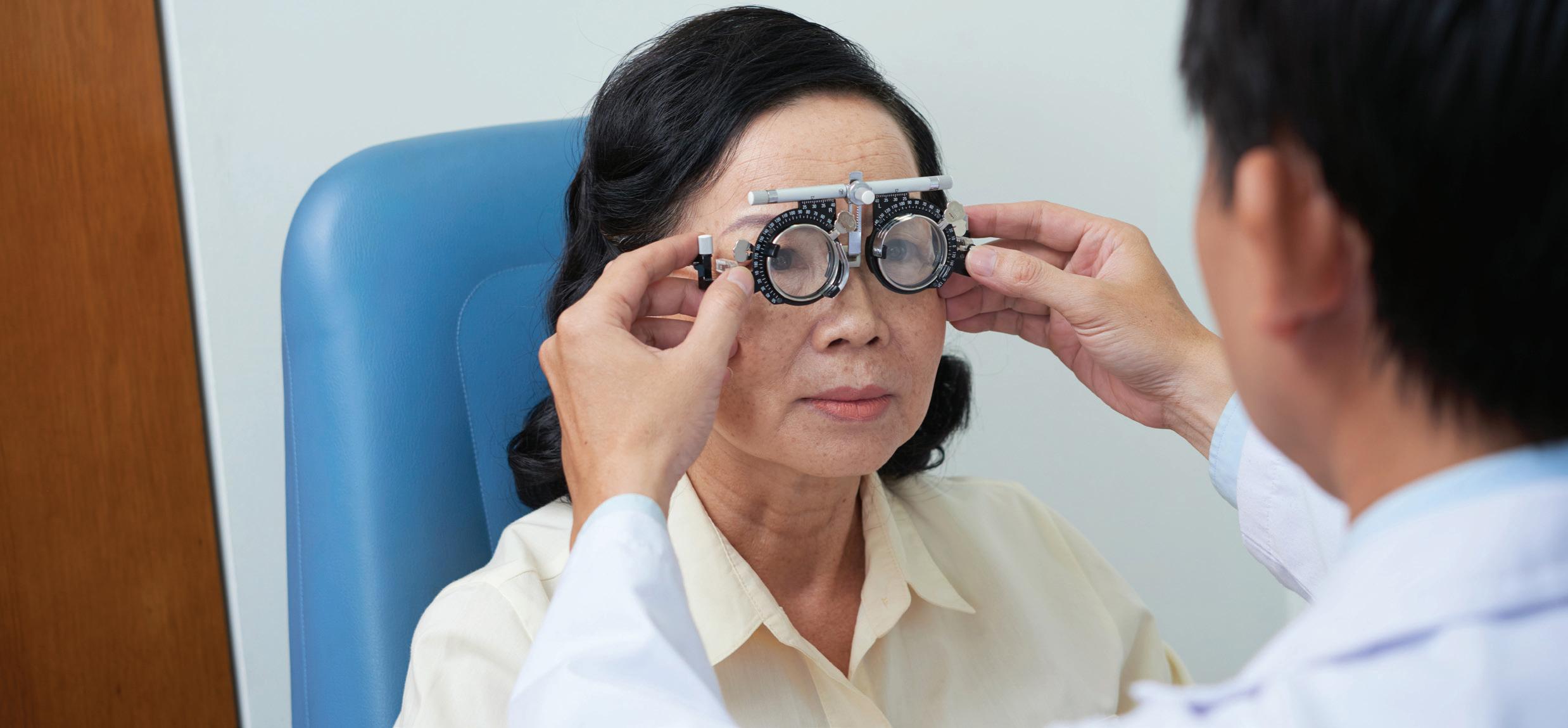 Amir Khan, M.D., and Joseph Breen, M.D., Mayo Foundation for Medical Education and Research
Amir Khan, M.D., and Joseph Breen, M.D., Mayo Foundation for Medical Education and Research
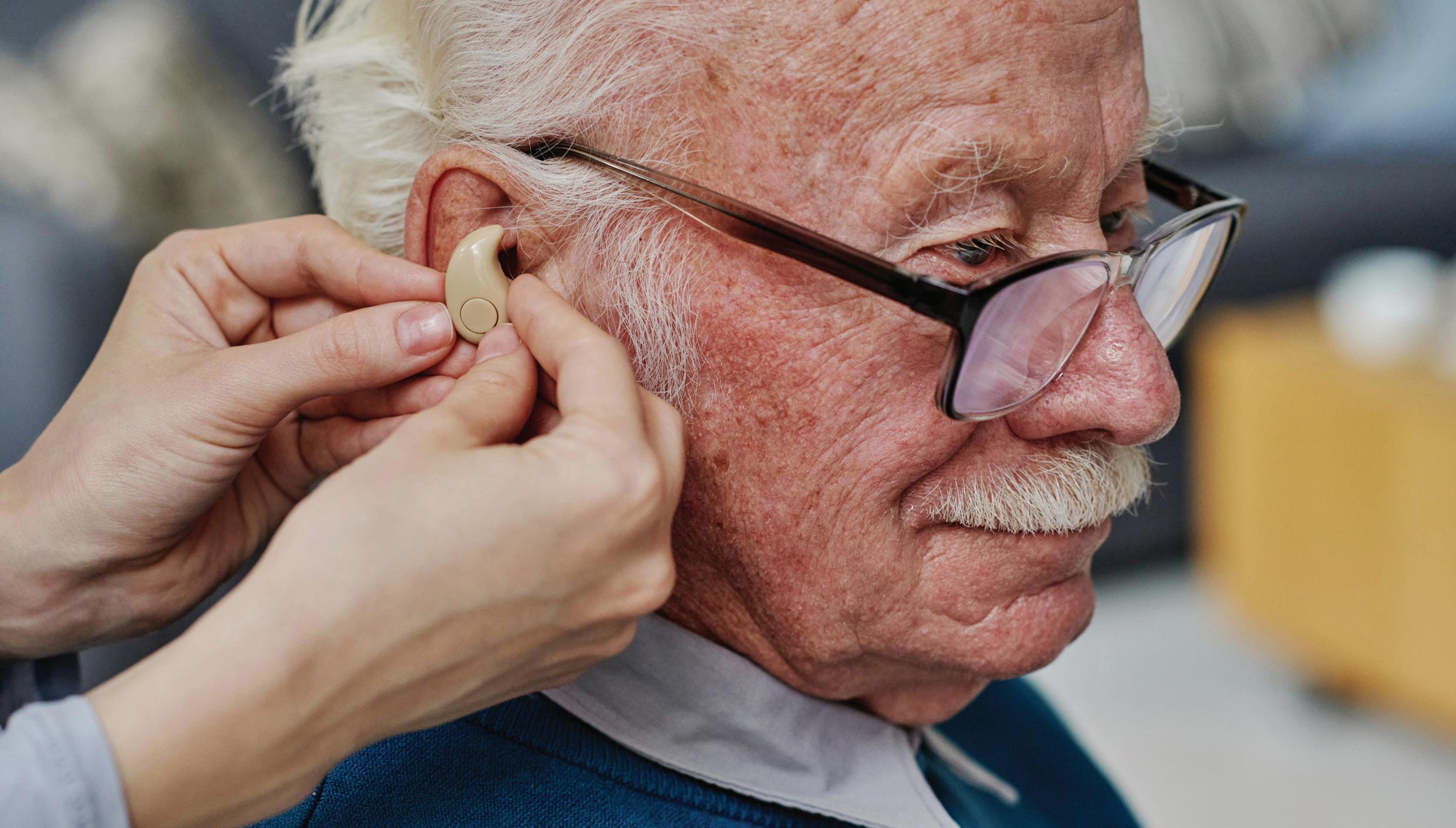
floaters, making them less noticeable. Laser therapy risks still are not completely known.
As with any eye problem, if you are concerned about eye floaters, it is best to discuss your situation with an eye care professional, who will conduct a complete eye exam. By examining the back of the eyes and the vitreous, your eye care professional can determine the cause of the floaters. — Amir Khan, M.D., Ophthalmology, Mayo Clinic, rochester, Minnesota
Dear Mayo clinic: i’m 70 years old and have worn hearing aids for about a decade. over the past several years, my hearing seems to be getting worse. although i have tried several different kinds of hearing aids, i feel as if they are not effective any longer. a friend suggested i ask an audiologist about cochlear implants. i thought those were just for people who are deaf. could a cochlear implant help someone like me? how does it work?
answer: A cochlear implant could be a good alternative to hearing aids in your situation. it’s true that when they were introduced in the 1980s, cochlear implants mainly were used for people who had complete hearing loss. Today, however, they often are used to help people who have more advanced hearing loss that cannot be corrected with hearing aids.
your ear has three areas: the outer, middle and inner ear. sound waves pass through the outer ear and cause the eardrum to vibrate. The eardrum and three small bones of the middle ear transmit the vibrations as they travel to the inner ear. Within the inner ear, the vibrations pass through fluid in a snail-shaped structure, called the cochlea.
inside the cochlea are thousands of tiny sensors, called hair cells, that turn the vibrations into electrical signals that are sent to your brain through your auditory nerve. The vibrations of different sounds affect these tiny hairs in different ways, causing the nerve cells to send different signals to your brain. That’s how you distinguish one sound from another.
in most people who develop hearing loss, the hair cells in the cochlea are damaged or missing, usually due to aging, exposure to loud noise or for genetic reasons. That means the electrical signals can’t be transmitted efficiently to the brain, and the result is hearing loss. A cochlear implant replaces the function of the hair cells by sending electrical signals directly to the hearing nerve and giving the brain the ability to perceive sound once again.
The implant has two main pieces: an external processor that fits behind your ear and an internal receiver implanted under the skin behind your ear. The processor captures and processes sound signals and then sends those signals to the receiver. The receiver sends the signals to tiny electrodes that are placed directly into the cochlea when
MARCH 2024 • SENIOR LIVING IN ALASKA 11
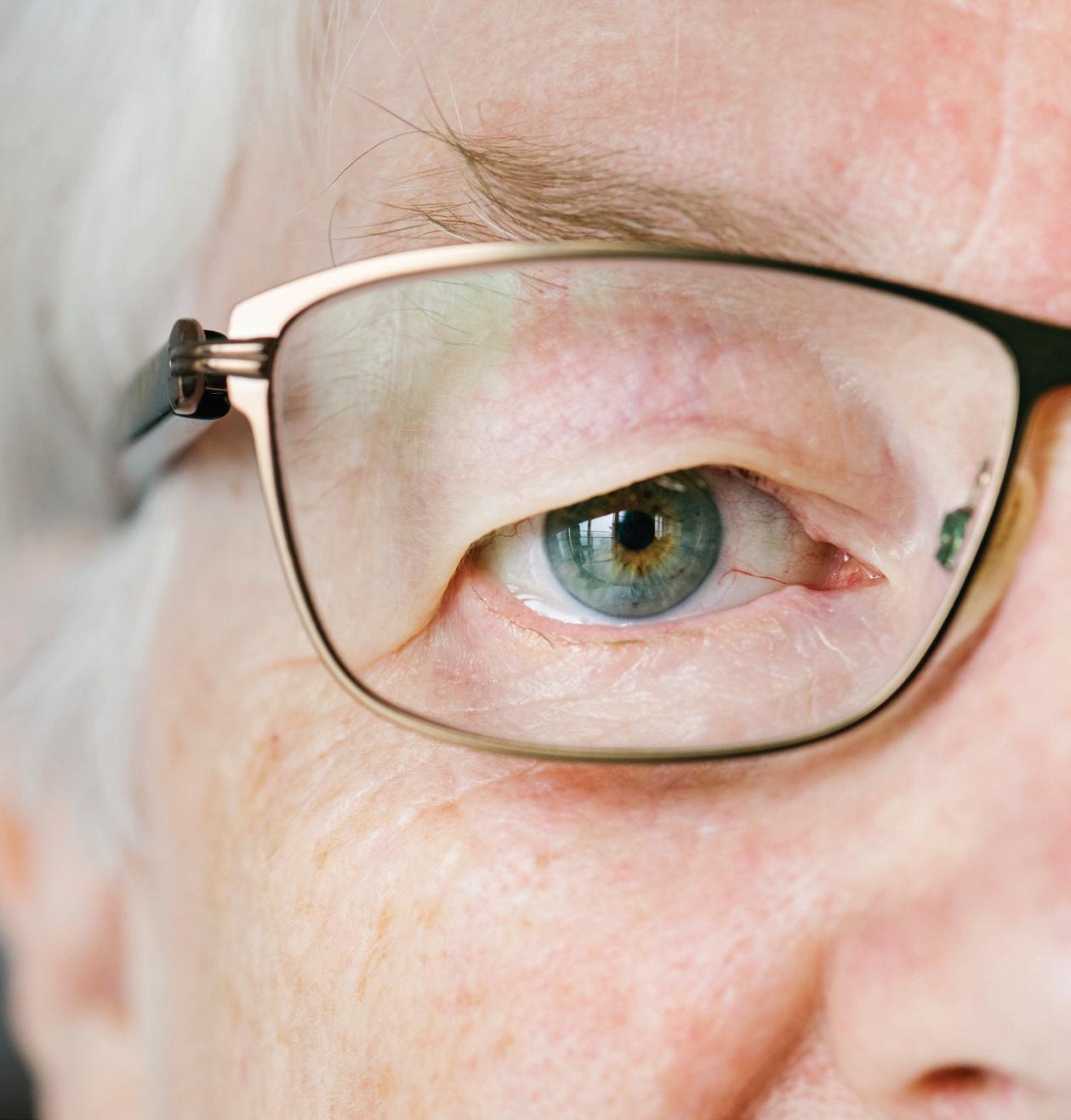

the device is implanted. Those signals are received by the auditory nerve and directed to your brain, and your brain interprets those signals as sound. All parts of a cochlear implant are small, and the processor that fits behind your ear looks similar to a hearing aid. Because of the small size of these devices, they are relatively inconspicuous, particularly in people with long hair.
Cochlear implantation requires a consultation with an otolaryngology surgeon who would perform a relatively short outpatient surgical procedure. A small incision is made behind the ear to insert the device. Most people experience little discomfort from the surgery, and its overall risk is low.
Once a patient has had a chance to heal — usually several weeks after surgery — an audiologist connects the processor to the implant for the first time. The patient should be able to hear immediately, but many cochlear implant users report that they needed to adjust to the sounds that they hear with their implant. This adjustment process often takes at least six months, with many patients reporting that the sound quality and their ability to understand speech continue to improve for a year or more.
Cochlear implants are a well-established technology. At first, physicians and researchers only recommended them for people who had total hearing loss. Over the years, though, research has shown that cochlear implants can be useful for people who still have some hearing or who have useful hearing in only one ear. They can be particularly helpful for people who have difficulty understanding speech in everyday listening situations, despite using good hearing aids.
Talk to a health care professional who specializes in hearing loss to find out if you would be a good candidate for a cochlear implant. Most people who receive a cochlear implant find that they can communicate better with the people around them, and more fully participate in conversations and other daily activities that require the ability to hear clearly. —
Joseph Breen, M.D.,
Otolaryngology — Head and neck surgery, Mayo Clinic, Jacksonville, florida
Mayo Clinic Q & A is an educational resource and doesn’t replace regular medical care. E-mail a question to MayoClinicQ&A@mayo.edu. For more information, visit www.mayoclinic.org.
12 SENIOR LIVING IN ALASKA • MARCH 2024
Dementia: Coping with Common, Sometimes Distressing Behaviors
Andrew E. Budson, M.D., Harvard Health Blog
dementia poses many challenges, both for people struggling with it and for those close to them. it can be hard to witness and cope with common behaviors that arise from illnesses like alzheimer’s disease, vascular dementia or frontotemporal dementia.
Caring for a person who has dementia may be frustrating, confusing or upsetting at times. understanding why certain behaviors occur and learning ways to handle a variety of situations can help smooth the path ahead.
What behaviors are common when a person has dementia?
people with dementia often exhibit a combination of unusual behaviors, such as:
• Making odd statements or using the wrong words for certain items.
• Not realizing they need to bathe or forgetting how to maintain good hygiene.
• repeating themselves or asking the same question over and over.
• Misplacing objects or taking others’ belongings.
• Not recognizing you or remembering who they are.
• Being convinced that a deceased loved one is still alive.

EXCLUSIVE ALASKA-INSPIRED DESIGNS




ALASKA PRINTS FOR PURCHASE!
Check out our gallery featuring nature, landscapes and wildlife photos from all over Alaska! Various print sizes are available.
w w w . a d n s t o r e . c o m
14 SENIOR LIVING IN ALASKA • MARCH 2024
SCAN TO SHOP

• Hoarding objects, such as mail or even garbage.
• exhibiting paranoid behavior.
• Becoming easily confused or agitated.
• leaving the house without telling you, and getting lost.
Why do these behaviors occur?
inside the brain of a loved one with dementia, picture a wildfire shifting course, damaging or destroying brain cells — neurons — and neural networks that regulate our behavior.
What drives this damage depends on the underlying cause, or causes, of dementia. for example, while the exact cause of Alzheimer’s disease is not known, it is strongly linked to proteins that are either gunking up or strangling brain cells. someone with vascular dementia has experienced periodic insufficient blood flow to certain areas of the brain, causing neurons to die.
“As dementia progresses, the person loses brain cells associated with memory, planning, judgment and controlling mood. You lose your filters,” says Dr. Stephanie Collier, a psychiatrist at Harvard-affiliated Mclean Hospital.
six strategies for coping with dementia-related behaviors
Dealing with distressing or puzzling dementia-related behavior can require the type of tack you’d take with a youngster. “Due to declines, older adults with dementia can seem like children. But people are generally more patient with children. you should consider using that approach with older adults,” suggests lydia Cho, a Mclean Hospital neuropsychologist.
• don’t point out inaccurate or strange statements. “it can make people with dementia feel foolish or belittled. They may not remember details but hold onto those emotions, feel isolated and withdraw. instead, put them at ease. Just go with what they’re saying. keep things light,” Cho says.
• don’t try to reason with the person. Dementia has damaged your loved one’s comprehension. Attempting to reason might be frustrating for both of you.
• use distraction. This helps when the person makes unreasonable requests or is moderately agitated. “Acknowledge what the person is saying, and change the activity. you could say, ‘i see that you’re upset. let’s go over here for a minute.’ And then
MARCH 2024 • SENIOR LIVING IN ALASKA 15

do an activity that engages the senses and relaxes them, such as sitting outside together, listening to music, folding socks or eating a piece of fruit,” Collier says.
• Keep unsafe items out of sight. put away or lock up belongings the loved one shouldn’t have — especially potentially dangerous items like car keys or cleaning fluids. Consider installing cabinet locks.
• supervise hygiene routines. The person with dementia might need a reminder to bathe, or might need to have the day’s clothes laid out on the bed. Or you might need to assist with bathing, shaving, brushing teeth or dressing.
• spend time together. you don’t have to convince your loved one of your identity or engage in fascinating conversation. Just listen to music or do some simple activities together. it will help keep the person from withdrawing further.
safety is essential when a person has dementia sometimes simple strategies aren’t enough when a loved one has dementia.
for example, if the person frequently tries to leave home, you might need to add child-proof covers to doorknobs, install additional door locks or a security system in your home, or get the person a gps tracker bracelet.
if the person is frequently upset or even violent, you’ll need to call the doctor. it could be that a new medical problem — such as a urinary tract infection — is causing agitation. “if the agitated behavior isn’t due to a new health problem and is predictable and severe, we might prescribe a medication to help regulate mood, such as an antidepressant or an antipsychotic in cases of extreme agitation or hostility,” Collier says.
as dementia changes, seek the help and support you need
no one expects you to know how to interact with someone who has dementia. There’s a learning curve for all of us, and it continues even after you get a feel for the situation. “The process keeps changing,” Cho says. “What works today may not work next week or the week after that for your loved one. so keep trying different strategies.”
And get support for yourself, such as group therapy for caregivers and their families. You can also find information at the Alzheimer’s Association or Family Caregiver Alliance.
Heidi Godman is executive editor of Harvard Health Letter.
16 SENIOR LIVING IN ALASKA • MARCH 2024

 Howard LeWine, M.D., Harvard Health Publishing, The Medicine Cabinet
Howard LeWine, M.D., Harvard Health Publishing, The Medicine Cabinet
Q:
i used tO Be GOOd at multitasKinG WHen i Was YOunGer. it’s nOt WOrKinG sO Well FOr me nOW. anY suGGestiOns?
a:
Older adults often struggle with multitasking, in part because aging brains have more trouble blocking distractions. Distractions can impair their working memory — the capacity to hold and access information over a brief period.
Working memory helps you perform everyday mental tasks, such as learning a telephone number and then entering it into a smartphone, and following a conversation. it also helps you conduct complex tasks, like reasoning, comprehension and learning.
The solution to breaking free from multitasking is to monotask, meaning you focus on only one job until it’s completed. This approach lowers the burden on working memory, reduces your vulnerability to distraction, and helps you complete the task more efficiently and quickly. effective monotasking revolves around managing time well, working for brief periods, blocking distractions and managing stress. Here are several strategies that can help you improve in these areas:
list only two daily priorities. people get caught in the multitasking trap by taking on too many projects. When faced with multiple to-do items, choose the top two and leave the others for another day.
Set aside time. Create a defined time frame for your task and commit to it. The important part about blocking out time is respecting it.
Work in intervals. With intervals, you work for a set time followed by a brief mental break, and then you repeat the cycle until the task is finished. The back-and-forth between work and rest helps establish a rhythm, where your brain knows when to work and when to rest.
Block distractions. Create a distraction-free environment when monotasking. stay away from the internet and TV, and turn off your phone or set it to “do not disturb.” every time you switch from a task to a distraction and then back, it takes time and brain energy to refocus, and the work ends up taking longer than it should.
Manage stress. spikes in the stress hormone cortisol diminish working memory storage and retrieval. Anything you can do to reduce and manage stress can support the brain for monotasking.
practice being in the moment. Train your brain for monotasking by practicing ways to stay present and focused. for instance, do a daily 5- to 10-minute meditation: silently count your breaths in repeated sets of 10. reading is another great exercise; set aside 10 to 20 minutes every day to read, and take breaks when your attention drifts.
Howard LeWine, M.D., is an internist at Brigham and Women’s Hospital in Boston and assistant professor at Harvard Medical School. For additional consumer health information, please visit www.health.harvard.edu.





18 SENIOR LIVING IN ALASKA • MARCH 2024
Health Fairs & Affordable Blood Screenings Statewide Prices Start at $20 CMP, CBC, Lipids, A1C, Vit B12, Vit D2/ D3, TSH, PSA, & more For more information and to make an appointment visit www.alaskahealthfair.org Anchorage (907) 278-0234 Fairbanks (907) 374-6853 Juneau (907) 723-5100 Over 40 years of experience delivering health education and affordable blood tests throughout Alaska.
Boost your energy naturally
Howard LeWine, M.D., Harvard Health Publishing, The Medicine Cabinet
Q: i am in my 70s and overall my health is good. But i wish i had more energy. Why do older people become less energetic? How can we boost our energy naturally?
a: As we get older, we lose energy-producing engines in the cells (mitochondria), and as a result we make less adenosine triphosphate (ATp) — the molecule that delivers energy to cells throughout the body. We also lose muscle mass, resulting in fewer cells, fewer mitochondria and lower ATp production. if you’re too tired to be active, it compounds the problem by further weakening and shrinking muscles.
fortunately, a healthier lifestyle can help give you more energy. That means eating a diet low in added sugars and processed foods, with enough calories and nutrients to meet your needs; getting seven to nine hours of sleep each night; managing stress; and, if necessary, talking to your doctor about medication side effects.
And perhaps the fastest, most important way to boost your energy is to move more. The recommended amounts of exercise are at least 150 minutes of aerobic activity, such as brisk walking, per week and at least two muscle-strengthening workouts per week. But studies have shown that any amount of exercise is beneficial.

For example, a review of almost 200 randomized controlled trials of resistance training, published online July 6, 2023, by the British Journal of sports Medicine, found that people who did any strength training at all increased muscle mass and physical function compared with people who didn’t do strength training.
in addition to boosting your energy, it’s essential to use what you have wisely. Think in terms of “energy dollars” and be more frugal about the way you spend them. strategies known as the “four p’s” can help:
PriOritizinG. Think about what you need to accomplish in a day versus what you want to accomplish, and make the necessary activity your priority.
PlanninG. planning how to use your energy will help you accomplish more. planning could be scheduling just one major errand or appointment per day as opposed to three errands. planning could also mean that you schedule rest breaks.
PaCinG. Don’t try to rush through activities, which can use up all of your energy quickly. rushing leads to fatigue and increases your risk of falling. spread out your activity to give yourself time to recover in between tasks.
POsitiOninG. Maintain good posture when you’re sitting or standing. you’ll expand your lungs so they can take in more oxygen. And it might help to sit down during activities to reduce the amount of energy you’re using.
Howard LeWine, M.D., is an internist at Brigham and Women’s Hospital in Boston and assistant professor at Harvard Medical School. For additional consumer health information, please visit www.health.harvard.edu.




20 SENIOR LIVING IN ALASKA • MARCH 2024
Alaska Community Development Corporation Providing healthy, safe and energy efficient housing for Alaskans Housing Accessibility Needs? A laska Community Development Corporation can help with your housing accessibility needs in the the Municipality of Anchorage, Mat-Su Bor ough, Kenai Peninsula & Fairbanks *Access ramps and lifts *Bathr oom modifications *No cost to qualified households (55 and over) *The help you need to live in your own home Visit our website, www.alaskacdc.or g to download an application. Or, call or stop by our office and we will gladly answer any questions. Funding by: Alaska Housing Finance Corporation Anchorage 1517 Industrial Way #8 Palmer, AK 99645 Phone: 907-746-5680 • Fax: 907-746-5681 www.alaskacdc.org NMLS#358478 1 Person—$85,600 2 Person—$97,850 3 Person—$110,050 4 Person—$122,300 5 Person—$132,100 6 Person—$141,850 (Call for guidelines for other service areas)
how to Cook all Types of greens so They Taste Delicious

all types of greens that are sturdy and leafy — such as chard, kale, mustard, beet, collard and turnip greens — are known as cooking greens. they bring valuable nutrients to your diet and some flavor and color to your table. we’ve got the basics on how to cook them.
HOW tO COOK Greens
follow these two steps for cooking collard greens, turnip greens, beet greens or any other type of greens (spinach, however, is best when sauteed).
1. PreP tHe Greens.
• Wash 12 ounces of greens in cold water. Drain well in a colander. remove the stems by cutting them away with a sharp knife. Discard any bruised leaves.
• Tear the leaves into pieces. you should have about 12 cups total.
2. COOK tHe Greens
• Bring a small amount of lightly salted water to boiling in a Dutch oven or stockpot. Add the greens.
• Cover the pan and cook until tender. Chard and beet greens will take 8 to 10 minutes; kale, mustard, turnip and collard greens will take 15 to 20 minutes.
• Drain the greens well in a colander, pressing to remove excess liquid.
• if desired, toss with 1 tablespoon of butter or olive oil. season to taste with salt and pepper.
addinG FlavOr tO COOKed Greens
For more flavor when you’re cooking greens, consider these options.
• use chicken broth for the cooking liquid instead of water.
• Add chopped onions, garlic or bacon to the cooking liquid.
• Top cooked greens with crumbled crisp-cooked bacon.
• After cooking, sprinkle greens with balsamic or cider vinegar.
diFFerent tYPes OF Greens
if you can’t decide between cooking beet greens and cooking kale, take a look at this guide.
• Beet greens: Often red-veined, the leaves have a mild beet-like flavor, though larger leaves can be more pungent.
• Chard: Chard can be light to dark green, with stems in colors from white to pink to orange to red. it tastes a little like a cross between beets and spinach.
• Collard greens: These thick, coarse, paddle-like leaves bring cabbage- and broccoli-like flavors.
• Dandelion greens: These greens are tender but their slender, sawtooth-edge leaves have a subtly bitter taste.
• kale: This crinkly-leaf green has a strong peppery bite. You can find it in flowering, purple, common green and white varieties.




• Mustard greens: Expect a hot mustardy flavor in these light green leaves, though cooking can mellow the heat.
• Spinach: If you want a mild, sweeter flavor, look for baby spinach at the store — it’ll also be less prep work since the stems are smaller.
• Turnip greens: These greens impart peppery and mustardy zing, which becomes less pronounced after cooking.
CHOOsinG and stOrinG COOKinG Greens
While most cooking greens are available year-round, their peak season is from september to May, or straight from your garden during the long days of Alaska summers.
• look for leaves that are brightly colored with no sign of yellowing, wilting or discolored spots.
• To store, cut away the center stalks of kale leaves (leave stalks on the other leaves). refrigerate greens in plastic bags for up to five days; the exception is mustard greens, which you can refrigerate for up to a week.
Once you master cooking greens, and discover your favorite, serving them as a healthy side with dinner is easy.
Better Homes and Gardens is a magazine and website devoted to ideas and improvement projects for your home and garden, plus recipes and entertaining ideas. Online at www.bhg.com.








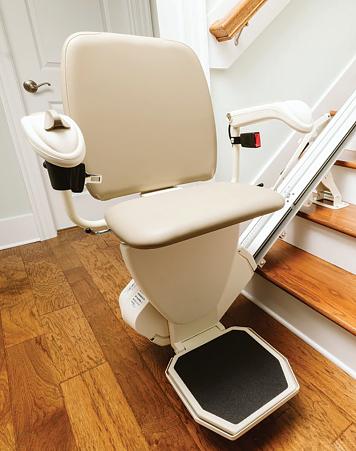
22 SENIOR LIVING IN ALASKA • MARCH 2024
Providing Accessibility Solutions for Older Adults Stairlifts Platform lifts Patient lifts Bath safety Lift chairs Automatic door openers Power chairs and scooters Wheelchair carriers Wheelchair ramps Our mobility Consultants are committed to your comfor t and satisfaction, so reac h out to us today at 1051 East Bogard Rd. Suite 6, Wasilla, Alaska 99654 Scott email: sheim@101mobility.com • Logan email: lpoffenbarger@101mobility.com (907) 312-2388! In-p erson & Zo om classes for curious learners Opp or tunities for Lifelong Education Learning Adventures No tests , no grades , just fun! w w w.OleAnchorage.org or (907) 231-0095

MARCH 2024 • SENIOR LIVING IN ALASKA 23 Enjoy Your Retirement! Own your own home in a maintenance free and secure environment! Homes sell quickly Call to schedule a tour For more information or a tour please call: 907-333-8844 2020 Muldoon Road www.chesterparkcoop.com Come Tour Anchorage’s Premier 55+ Independent Living Community



24 SENIOR LIVING IN ALASKA • MARCH 2024

































 Amir Khan, M.D., and Joseph Breen, M.D., Mayo Foundation for Medical Education and Research
Amir Khan, M.D., and Joseph Breen, M.D., Mayo Foundation for Medical Education and Research











 Howard LeWine, M.D., Harvard Health Publishing, The Medicine Cabinet
Howard LeWine, M.D., Harvard Health Publishing, The Medicine Cabinet
























